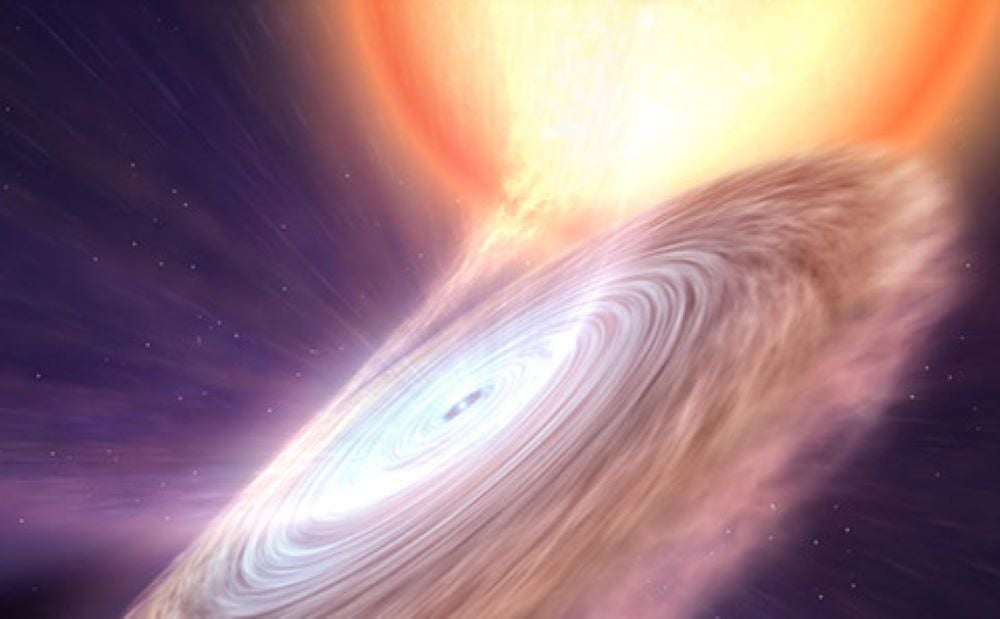Powerful warm winds seen blowing from ‘cosmic cookie monster’ neutron star
Researchers suggest the discovery provides new insight into the behaviour of the objects.

Your support helps us to tell the story
From reproductive rights to climate change to Big Tech, The Independent is on the ground when the story is developing. Whether it's investigating the financials of Elon Musk's pro-Trump PAC or producing our latest documentary, 'The A Word', which shines a light on the American women fighting for reproductive rights, we know how important it is to parse out the facts from the messaging.
At such a critical moment in US history, we need reporters on the ground. Your donation allows us to keep sending journalists to speak to both sides of the story.
The Independent is trusted by Americans across the entire political spectrum. And unlike many other quality news outlets, we choose not to lock Americans out of our reporting and analysis with paywalls. We believe quality journalism should be available to everyone, paid for by those who can afford it.
Your support makes all the difference.Astronomers have observed powerful blasts of hot, warm and cold winds from a neutron star as it rips up a nearby companion.
Researchers suggest the discovery provides new insight into the behaviour of the objects.
Neutron stars are among the densest objects in the universe and are formed when a massive star runs out of fuel and collapses.
Along with black holes they are some of the most extreme objects in the universe, ripping up neighbouring stars.
However, most of what they take in gets flung back into space at high speed.
The new research has shed new light on the behaviour of these stellar cannibals.
By expelling energy and matter into space they contribute to the formation of new generations of stars, and to the evolution of the galaxy itself, the research suggests.
In the study, scientists for the first-time found blasts of hot, warm and cold winds from a neutron star whilst it consumed matter from a nearby star.
The finding was made using some of the most powerful telescopes on Earth and in space, including Nasa’s Hubble Space Telescope, and the European Southern Observatory Organisation’s Very Large Telescope.
Co-author Nathalie Degenaar, from the University of Amsterdam, said: “Neutron stars have an immensely strong gravitational pull that allows them to gobble up gas from other stars.
We report on a new discovery that provides key information about the messy eating patterns of these cosmic cookie monsters
“The stellar cannibals are, however, messy eaters and much of the gas that neutron stars pull towards them is not consumed but flung into space at high speed.
“This behaviour has a large impact both on the neutron star itself and on its immediate surroundings.
“In this paper we report on a new discovery that provides key information about the messy eating patterns of these cosmic cookie monsters.”
While warm gas is the most common material associated with the material being propelled out into space, until now only winds of hot or cold gas have been observed in X-ray binaries.
But the new study found evidence of warm wind occurring at the same time as cold wind.
A team of researchers from 11 countries, led by the University of Southampton, studied the recent eruption of the X-ray binary known as Swift J1858.
Lead author Dr Noel Castro Segura, of the University of Southampton, said: “Eruptions like this are rare and each of them is unique.
“Normally they are heavily obscured by interstellar dust, which makes observing them really difficult.
“Swift J1858 was special because even though it is located on the other side of our galaxy, the obscuration was small enough to allow for a full multiwavelength study.
“I’m excited because our discoveries give us a new window into these phenomena and might ultimately help us to build a more concrete understanding of what physical conditions are required to power winds in a wider range of astrophysical objects.
“The new insights provided by our results are key to understanding how these objects interact with their environment.
“By shedding energy and matter into the galaxy, they contribute to the formation of new generations of stars, and to the evolution of the galaxy itself.”
The study, published in Nature, was funded by grants from agencies including the Science and Technology Facilities Council and Nasa.